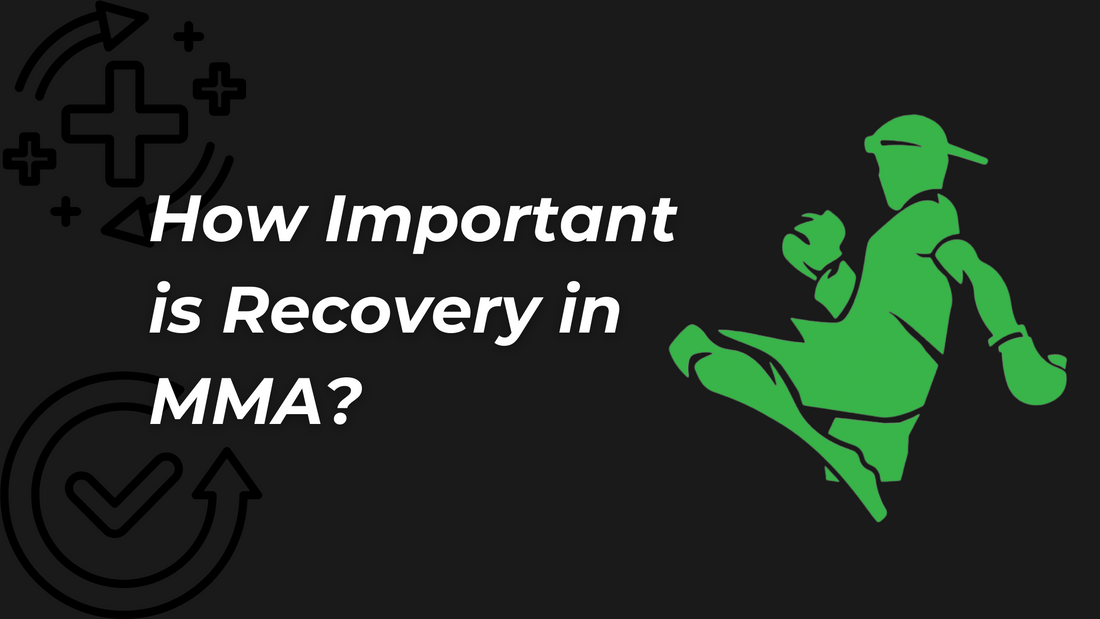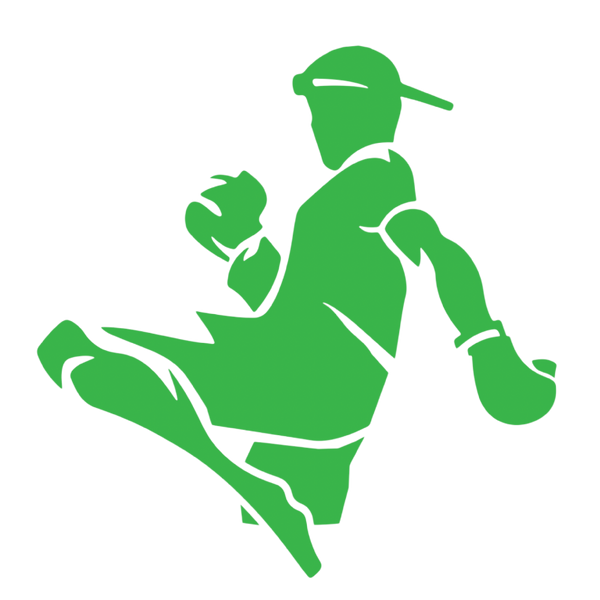
How Important is Recovery for MMA?
Share
So, you just finished a gruelling sparring session or an intense MMA or kickboxing match. Your body feels like it's been run over by a bus, but not just any bus, the kind that does a three-point turn and goes over you again for good measure. You’re sweaty, exhausted, and questioning your life choices. It’s all part of the process, right? But here's the thing: without proper recovery, you're just setting yourself up for more pain and less gain.
The good news? Effective rest and recovery can transform that post-fight ache into a badge of honor, rather than a chain around your neck. Let’s dive into why recovery is crucial in MMA, and how to get the most out of your downtime so you can come back stronger, faster, and ready to face that bus again.
The Science of Recovery
Why Recovery Matters
Recovery isn't just about feeling less sore; it's about allowing your body to repair and strengthen itself. When you train hard, especially in a sport as demanding as MMA, you’re breaking down muscle fibers and depleting energy stores. Recovery helps to repair damaged tissues, replenish energy, prevent injury, and improve performance.
- Repair damaged tissues: Every punch, kick, and grapple you perform puts stress on your muscles, leading to micro-tears. These tears need time to heal, and during this process, the muscles rebuild stronger and more resilient.
- Replenish energy: Intense training sessions deplete the glycogen stores in your muscles. Recovery allows these stores to be replenished, ensuring you have the energy needed for your next session.
- Prevent injury: Overuse injuries are common in athletes who don’t allow their bodies to recover. By giving your muscles, tendons, and ligaments time to heal, you reduce the risk of sprains, strains, and chronic injuries.
- Improve performance: Proper recovery leads to better long-term performance. Well-rested muscles are more efficient and powerful, and a well-rested mind is sharper and more focused.
What Happens If You Don't Recover?
Ignoring recovery is like ignoring the maintenance light on your car. Eventually, something’s going to break. Overtraining can lead to chronic fatigue, injuries, and burnout.
- Chronic fatigue: Without adequate rest, your body and mind can’t recover fully, leading to constant tiredness. This chronic fatigue affects your performance, making it hard to train effectively and increasing the risk of poor performance during fights.
- Injuries: Continuous training without proper recovery puts excessive strain on your body, leading to overuse injuries such as tendinitis and stress fractures. Acute injuries are also more likely as your body becomes fatigued and less capable of handling the demands of training.
- Burnout: Both physical and mental exhaustion can occur when you don’t allow for recovery. Burnout can make you lose interest in training and competing, potentially leading to quitting the sport altogether.
Types of Recovery in MMA
Active Recovery
Active recovery is a bit of an oxymoron—it’s about moving to recover. Light activities like walking, swimming, or yoga can help increase blood flow, reduce muscle stiffness, and speed up recovery time.
- Increase blood flow: Gentle movements increase circulation, delivering oxygen and nutrients to tired muscles while helping to remove waste products like lactic acid.
- Reduce muscle stiffness: Engaging in light activities keeps your muscles limber and reduces the stiffness and soreness that often follow intense workouts.
- Speed up recovery time: Active recovery can accelerate the healing process, helping you feel better and get back to full training more quickly.
Passive Recovery
Sometimes, the best thing you can do is nothing at all. Passive recovery involves complete rest, including sleep and scheduled rest days, to let your body heal.
- Sleep: The ultimate recovery tool. During deep sleep, your body releases growth hormones that are essential for muscle repair and growth. Aim for 7-9 hours per night to ensure optimal recovery.
- Rest days: Taking regular days off from intense training gives your body the chance to repair itself, reducing the risk of overuse injuries and mental burnout.
Nutritional Recovery
You are what you eat, and your recovery depends on it. Proper nutrition can repair muscles, replenish glycogen, and reduce inflammation.
- Repair muscles: Protein is essential for muscle repair and growth. Incorporate lean meats, fish, eggs, and plant-based proteins into your diet.
- Replenish glycogen: Carbohydrates are crucial for restoring glycogen levels in your muscles. Whole grains, fruits, and vegetables should be staples in your meals.
- Reduce inflammation: Foods rich in omega-3 fatty acids (like fish and flaxseeds) and antioxidants (like berries and leafy greens) can help reduce inflammation and speed up recovery.
Hydration
Staying hydrated is key to recovery. Dehydration can lead to cramps, fatigue, and slower healing. Aim for plenty of water, especially after intense training sessions, and consider electrolytes to replace lost minerals from sweat.
- Plenty of water: Drink water consistently throughout the day, and increase your intake after training sessions to replace lost fluids.
- Electrolytes: Sweating during intense workouts causes you to lose electrolytes like sodium, potassium, and magnesium. Replenish these with sports drinks, coconut water, or electrolyte tablets.
Home Recovery Techniques
Ice Baths
Ice baths, or cryotherapy, can be brutal but effective. They help reduce inflammation, speed up recovery, and can make you feel like a new person after a tough session.
- Reduce inflammation: The cold temperature constricts blood vessels and reduces swelling, helping to manage pain and inflammation.
- Speed up recovery: The shock of the cold can stimulate the nervous system, promoting faster recovery and reducing muscle soreness.
Stretching and Foam Rolling
Keeping your muscles loose and flexible is crucial for recovery. Stretching and foam rolling can reduce muscle stiffness, improve flexibility, and break down muscle knots.
- Stretching: Incorporate dynamic stretching before workouts to warm up your muscles and static stretching afterward to cool down and improve flexibility.
- Foam rolling: This self-massage technique helps release muscle knots (trigger points) and improves blood flow to the muscles, aiding in recovery.
Compression Gear
Compression clothing can aid in recovery by improving circulation and reducing swelling. It's a simple yet effective way to support your muscles post-training.
- Improve circulation: Compression gear helps increase blood flow to the muscles, facilitating the removal of metabolic waste and delivery of nutrients.
- Reduce swelling: By providing gentle pressure, compression garments can help reduce muscle swelling and support recovery.
High-End Recovery Tools and Treatments
Hyperbaric Oxygen Therapy (HBOT)
HBOT involves breathing pure oxygen in a pressurized chamber. It enhances oxygen delivery, promotes healing of injured tissues, and can significantly reduce recovery time.
- Enhance oxygen delivery: The increased oxygen concentration helps damaged tissues heal faster by improving cellular repair processes.
- Reduce recovery time: HBOT can accelerate the body's natural healing processes, making it an effective treatment for severe injuries and chronic pain.
Electrical Muscle Stimulation (EMS)
EMS uses electrical impulses to contract muscles, improving muscle strength, reducing muscle soreness, and aiding in recovery.
- Improve muscle strength: EMS can enhance muscle recovery and growth by stimulating muscle contractions without physical activity.
- Reduce muscle soreness: The gentle contractions help flush out waste products from the muscles, reducing soreness and promoting recovery.
Infrared Saunas
Infrared saunas use light to create heat, which can detoxify the body, relax muscles, and reduce pain.
- Detoxify the body: The heat promotes sweating, which helps eliminate toxins from the body.
- Relax muscles: Infrared heat penetrates deeply into muscles, easing tension and reducing stiffness and pain.
Professional Massages
A good massage can do wonders for your recovery. Professional massages release muscle tension, improve circulation, and promote overall relaxation.
- Release muscle tension: Massage therapy helps break down knots and tightness in the muscles, reducing discomfort and improving flexibility.
- Improve circulation: The increased blood flow from a massage aids in delivering nutrients to the muscles and removing waste products, speeding up recovery.
Effective Home Recovery Tips
Create a Recovery Routine
Having a consistent recovery routine is key. Warm baths, sleep hygiene, and a balanced diet are essential components of an effective recovery plan.
- Warm baths: Taking a warm bath can relax your muscles and improve blood flow, making it a great way to unwind after training.
- Sleep hygiene: Create a relaxing bedtime routine to ensure you get quality sleep. This might include avoiding screens before bed, maintaining a cool, dark bedroom, and establishing a regular sleep schedule.
- Balanced diet: Eating a mix of protein, carbs, and healthy fats supports muscle repair and energy replenishment.
Listen to Your Body
Your body knows best. If you’re feeling overly sore or fatigued, take it easy. Recovery is personal, and what works for one person might not work for another. Pay attention to your body's signals and adjust your recovery plan as needed.
Use Technology
Apps and wearable tech can help you monitor your recovery. Sleep trackers, fitness apps, and other tools provide valuable insights into your recovery progress.
- Sleep trackers: Monitor your sleep quality and patterns to ensure you’re getting enough rest.
- Fitness apps: Track your workouts and recovery days to maintain a balanced training schedule.
Recovery in MMA isn’t just a luxury—it’s a necessity. From the food you eat to the sleep you get, every aspect of your recovery routine can impact your performance and longevity in the sport. By incorporating a mix of active and passive recovery, proper nutrition, and some high-end tools
